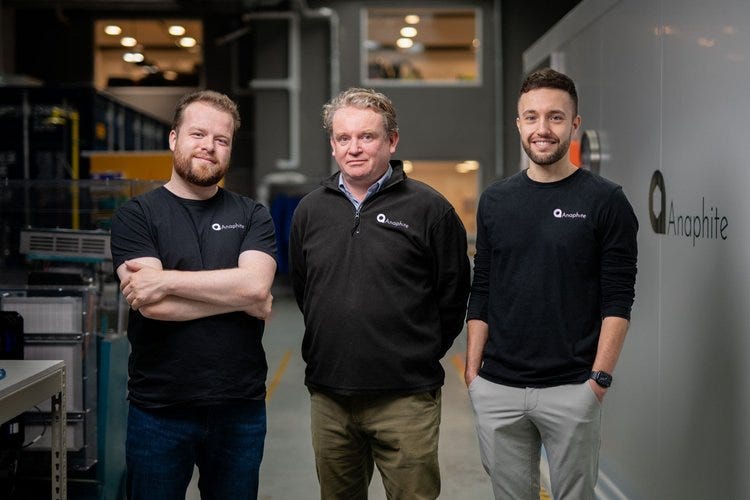MobilityMonday: Maniv invests in Anaphite to enable lower-cost, lower-emission battery manufacturing
Volume 8
Each Monday, I’ll be breaking down a recent development affecting the economy of the movement of people and goods. To follow along for the journey, enter your email below to subscribe.
🎗️Today we mark the one-year anniversary since the October 7 terror attacks here in Israel. We pray for the return of the 101 hostages still held in Gaza by Hamas, and for better days ahead for all in this corner of the world.
Anaphite’s Dry Coating Precursor unlocks electrode dry coating for battery manufacturers and automotive OEMs
It’s not every day that MobilityMonday gets to highlight a new Maniv portfolio company! Last week, Anaphite announced its Series A round, which we at Maniv co-led with World Fund.
The fact that batteries are the foundational backbones of the energy transition is no hidden fact. What is a hidden fact, however, is just how energy-intensive and capital-inefficient the incumbent battery manufacturing process is.
Creating the battery electrodes (the anode and cathode) is the initial step in any battery manufacturing workflow. Today, electrodes are typically produced through a process known as wet coating in which slurries of mixed active materials are combined with solvents before being coated onto current collectors. Unlike in the diagram below, the ovens which are then used to dry and evaporate the toxic solvents used to mix and coat the electrode slurry actually take up a football field’s worth of space (up to 100 meters) in a gigafactory.
The ovens and solvent recovery systems in wet coating represent more than 20% of the initial capex costs required to set up a battery manufacturing line. Additionally, wet coating is also responsible for somewhere between 30-45% of all energy used in the production of lithium-ion batteries, representing a not insignificant source of CO2 emissions. Furthermore, regulatory bodies are increasingly policing the use of the environmentally toxic solvents used in wet coating.
Enter dry coating, a process by which solvent-free materials are used to bind the cathode and anode active materials to the battery’s current collector, thereby eliminating the need for oven drying and solvent recovery, as well as the other aforementioned capex, opex, environmental, and regulatory burdens.
For these reasons, battery makers and EV manufacturers are naturally trending toward the use of dry-coating in their respective battery roadmaps. In 2020, Tesla announced plans to commercialize dry-coated battery cells in its EVs following its acquisition of dry-coating technology developed by Maxwell Technologies. In 2023, Volkswagen subsidiary PowerCo followed suit, as did LG Energy Solutions— a top-3 global battery maker— only two months ago.
Despite industry’s boastful public announcements and commitments, no player has been able to successfully commercialize their dry coating materials and processes, particularly with cathodes, something which Tesla has also struggled to perfect.
Anaphite’s secret (dry) sauce lies in its Dry Coating Precursor powders, which are battery chemistry-agnostic but tailor-made to customer specifications. Anaphite’s DCP offers a drop-in solution that rectifies some of the product performance issues currently plaguing battery manufacturers trying to implement dry coating into their production lines. Through the use of Anaphite’s proprietary formulations that unlock dry coating at scale, EV battery manufacturing has the potential to be 30% less energy intensive and up to 40% cheaper.
Congrats to Alex, Sam, Joe, and the entire Anaphite team for reaching this significant milestone as they continue to turbocharge the energy transition by revolutionizing the incumbent battery production paradigm. 🔋
👜 Grab Bag
Ranked: Worst Cities For Rush Hour Traffic Worldwide
How Israel-Iran Tensions Are Choking Commercial Flight Paths | WSJ
US offers EVgo conditional $1.05 billion loan for EV chargers







